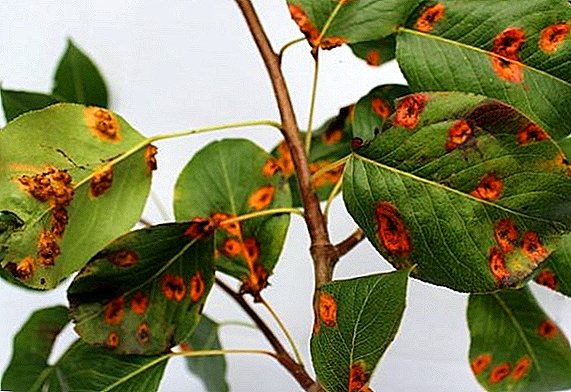 The Cacti family includes twenty species of plants united in the genus epiphyllum. These plants binds the structure of the stems, which are similar to the leaves. The word "epiphyllum" in Greek means "on the leaves", that is, the flowers of these plants are placed as if on leaves. Epiphyllums in nature grow in Central America and Mexico and prefer a tropical and subtropical climate. Common features of this genus are long, fleshy, flat or triangular stems with wavy edges, the absence of thorns, large funnel-shaped flowers up to 40 cm long and the presence of aerial roots.
The Cacti family includes twenty species of plants united in the genus epiphyllum. These plants binds the structure of the stems, which are similar to the leaves. The word "epiphyllum" in Greek means "on the leaves", that is, the flowers of these plants are placed as if on leaves. Epiphyllums in nature grow in Central America and Mexico and prefer a tropical and subtropical climate. Common features of this genus are long, fleshy, flat or triangular stems with wavy edges, the absence of thorns, large funnel-shaped flowers up to 40 cm long and the presence of aerial roots.
Consider the types of epiphyllum, their types, varieties, names and general description.
Epiphyllum Anguliger
Homeland uhMexico and India are considered pyifillum angular. This plant has green fleshy branching stems. The shape of the stem is flat, up to 30 cm long and 3-5 cm wide, has a sinusoidal appearance. Periodic oscillations of the pulp of the stem reach almost to its middle and form an angle. Thanks to this, the plant got its name. The teeth on the stem are round and have areoles with 1-2 white setae.
 The plant blooms with white flowers up to 20 cm long and 6-8 cm in diameter. Around the flower there are pointed outer leaves of the perianth, 4-5 cm long, lemon yellow or brown-yellow in color. The plant blooms at night and has a strong aroma. After flowering, brown-yellow fruits appear that are egg-shaped, 3-4 cm in diameter.
The plant blooms with white flowers up to 20 cm long and 6-8 cm in diameter. Around the flower there are pointed outer leaves of the perianth, 4-5 cm long, lemon yellow or brown-yellow in color. The plant blooms at night and has a strong aroma. After flowering, brown-yellow fruits appear that are egg-shaped, 3-4 cm in diameter.
The plant is unpretentious. This species has several varieties that are bred as a result of crossing and differ in shape, color and size of the petals.
Epiphyllum Hookeri
The stems of this species are arcuate and fall under their own weight to the ground. The distance between the areoles is 5 cm. The flowers are white with a long floral tube and inexpressive scent. This type of natural conditions is found on the territory of Venezuela, Guatemala, Cuba, Costa Rica, Mexico. 
In some classifications, Epiphyllum Hookeri is divided into:
- ssp. Columbiense;
- ssp. Hookeri;
- ssp. Guatemalense.
Epiphyllum Phyllanthus
 Homeland plants - Central and South America. Treats large species up to 1 m high with lateral shoots up to 50 cm long and up to 10 cm wide. Stems are light green in color, abundantly branched, with a large notch on the areolas and the central vein. At the base they have a cylindrical or triple or tetrahedral section about 2-3 cm in diameter, and then go into flat and thin. The flowers are large, up to 30 cm in length and up to 18 cm in diameter, white with a pink tinge.
Homeland plants - Central and South America. Treats large species up to 1 m high with lateral shoots up to 50 cm long and up to 10 cm wide. Stems are light green in color, abundantly branched, with a large notch on the areolas and the central vein. At the base they have a cylindrical or triple or tetrahedral section about 2-3 cm in diameter, and then go into flat and thin. The flowers are large, up to 30 cm in length and up to 18 cm in diameter, white with a pink tinge.
Night bloom. After pollination, an egg-shaped fruit appears in a violet-red color. In the wild, phyllanthus grows on the crowns of rainforest trees.
Important! In order for the epiphyllum to develop fully, do not forget to feed it with complex fertilizers during the growing season. In winter, fertilizing should be stopped, and watering should be reduced to every two weeks.
Epiphyllum serrated (Epiphyllum Hookeri)
 Mexico and Honduras are considered the birthplace of jagged epiphyllum, where it grows on trees or on rocks. The plant resembles a shrub, has erect stems up to 60-100 cm long and up to 10 cm wide, light green in color. In adult plants, the stem base is lignified, triangular or rounded. The shoots themselves are flat with a wavy shape of the edges, without prickles.
Mexico and Honduras are considered the birthplace of jagged epiphyllum, where it grows on trees or on rocks. The plant resembles a shrub, has erect stems up to 60-100 cm long and up to 10 cm wide, light green in color. In adult plants, the stem base is lignified, triangular or rounded. The shoots themselves are flat with a wavy shape of the edges, without prickles.
The flowering period occurs at the end of spring - the beginning of summer. Funnel-shaped flowers up to 30 cm long and in diameter up to 20 cm have a white or cream color, an aromatic smell and bloom at night. For the first time a jagged epiphyllum was shown at the exhibition of the London Gardening Society (1844) and received the highest award for innovation.
Epiphyllum acid-petal (Epiphyllum Oxypetalum)
It is the most common type. In nature, it grows wild in Mexico, Venezuela, Brazil in the crevices of rocks or on tree trunks. It has erect stems, which are strongly branched. The shape of the stems is rounded and at the base is able to get older with age. The stem itself is flat, fleshy, has a wavy contour and is pointed at the ends. The length reaches 2-6 m and a width of 10-12 cm.
 Due to the large night scented flowers, this cactus is called the “queen of the night”. The flowering period occurs in spring or early summer, although large specimens may bloom several times per season. Flowers are large, white, funnel-shaped, up to 30 cm long and up to 17 cm in diameter. After pollination, red berries of oblong form up to 12 cm long appear. This species grows quickly and reproduces easily.
Due to the large night scented flowers, this cactus is called the “queen of the night”. The flowering period occurs in spring or early summer, although large specimens may bloom several times per season. Flowers are large, white, funnel-shaped, up to 30 cm long and up to 17 cm in diameter. After pollination, red berries of oblong form up to 12 cm long appear. This species grows quickly and reproduces easily.
Epiphyllum Ackerman (Epiphyllum Ackermanii)
This species belongs to flowering cacti with hanging shoots 30-45 cm long. Flowers are large, delicate and come in various colors, depending on the variety. Mostly bright red. The flowering period - April - June.  The plant Apherman epiphyllum has straight flat coal fleshy green leaves 30-45 cm long, 3-5 cm wide.
The plant Apherman epiphyllum has straight flat coal fleshy green leaves 30-45 cm long, 3-5 cm wide.
When crossing the Ackermann epiphyllum, a hybrid variety Hermesissimus was bred, which possesses powerful ribbed shoots, pronounced areoles and is distinguished by its winter flowering. In its red tubular colors a bunch of golden stamens is placed.
Epiphyllum round-toothed (Epiphyllum crenatum)
This species was introduced to Europe in the nineteenth century from Central America. The plant has a gray-green shoots, flat at the edges and cylindrical at the base, up to 30 cm long and 3 cm wide. The shape of the shoots is wavy at the edges, areola with bristles and hairs are placed on them.
 Flowers have a cream or greenish color, with a diameter of 10-12 cm. Flower tube covered with various scales. Flowers have a fragrant smell and open during the day, which is rare for non-hybrid epiphyllums.
Flowers have a cream or greenish color, with a diameter of 10-12 cm. Flower tube covered with various scales. Flowers have a fragrant smell and open during the day, which is rare for non-hybrid epiphyllums.
In nature, there is a variety of epiphyllum round-toothed, which differs in the shape of a flower. Its marginal petals are bent and the floral tube is covered with small scales and spines.
A group of varieties called Cooper's epiphyllum (Epiphyllum cooperi), which is characterized by fragrant night flowers, was also created on the basis of rounded toothed epiphyllum.
Epiphyllum Laui
The species has small stems of arcuate shape in length up to 50 cm, width 5-7 cm, and side shoots 1-2 cm in diameter, characterized by rapid growth. The surface of the stems differs convexity venation, and on the edges of a small waviness. In the areola are yellow-brown hairy spines 3-5 mm long.
 Depending on the variety, the flowers are red or whitish-yellow in color and bloom in the evening. The flower is characterized by a funnel-shaped form with a length of 12-16 cm. Flowering lasts about 2 days. After pollination, fruits of oblong shape with a length of 4-8 cm in red appear. In nature, it grows in Mexico on rocks and in treetops and does not produce hybrid varieties.
Depending on the variety, the flowers are red or whitish-yellow in color and bloom in the evening. The flower is characterized by a funnel-shaped form with a length of 12-16 cm. Flowering lasts about 2 days. After pollination, fruits of oblong shape with a length of 4-8 cm in red appear. In nature, it grows in Mexico on rocks and in treetops and does not produce hybrid varieties.
Did you know? Epiphyllum flowers can be of a different color, but blue shades do not exist. Because of the beauty of their flowers, epiphyllum is called cactus-orchid.
Epiphyllum Paul de Lonpre
The crossing of the epiphyllum, round-toothed and selenitserius, led to the creation of varieties that have flat, fleshy, wavy long shoots of gray-green color along the edge. They borrowed the shape of the flower from selenitserius: thin petals of the bract frame wide inner petals.  Epifillum Paul de Lonpre is characterized by long shoots hanging down to the ground, and large flowers up to 14 cm in diameter. The flowers are cream colored with red marginal petals. The shape of the stems and flower color, this hybrid inherited from the epiphyllum round-toothed.
Epifillum Paul de Lonpre is characterized by long shoots hanging down to the ground, and large flowers up to 14 cm in diameter. The flowers are cream colored with red marginal petals. The shape of the stems and flower color, this hybrid inherited from the epiphyllum round-toothed.
Important! Epiphyllum has a small root system, so the pot fits it small in size. The young plant needs to be transplanted once a year, and mature much less often.
Epiphyllum Just Pru
Epiphyllum Just Pru is a hybrid plant bred in the Halligate nursery. The flowering period begins in spring. The flowers are light pink in the center and dark pink at the edges, with a diameter of 12-16 cm. Reproduces only by cutting. 
Did you know? The stems and fruits of epiphyllum are used in the treatment of the gastrointestinal tract, cardiovascular system, neurological disorders, headaches, colds, joints, psoriasis.
Having considered what kind of epiphyllum is, everyone can choose a plant to his taste. It combined the simplicity of cactus, the beauty of orchid flowers and the healing properties used by Aztecs in ancient times.












